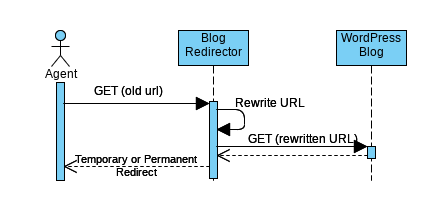You may remember that when I announced I moved to WordPress, I promised I wouldn’t break any of the old links, particularly as I kept them working since I started running the blog underneath my home office’s desk, on a Gentoo/FreeBSD, just shy of thirteen years ago.
This is not a particularly trivial matter, because Typo used at least three different permalink formats (and two different formats for linking to tags and categories), and Hugo used different ones for all of those too. In addition to this, one of the old Planet aggregators I used to be on had a long-standing bug and truncated URLs to a certain length (actually, two certain lengths, as they extended it at some point), and since those ended up indexed by a number of search engines, I ended up maintaining a long mapping between broken URLs and what they were meant to be.
And once I had such a mapping, I ended up also keeping in it the broken links that other people have created towards my blog. And then when I fixed typos in titles and permalink I also added all of those to the list. And then, …
Oh yeah, and there is the other thing — the original domain of the blog, which I made a redirect for the newest one nearly ten years ago.
The end result is that I have kept holding, for nearly ten years, an unwieldy mod_rewrite configuration for Apache, that also prevented me to migrate to any other web server. Migrating to a new hostname when I migrated to WordPress was always my plan, if nothing else not to have to deal with all those rewrites in the same configuration as the webapp itself.
I have kept, until last week, the same abomination of a configuration, running on the same vserver as the blog used to run. But between stopping relationships with customers (six years ago when I moved to Dublin), moving the blog out, and removing the website of a friend of mine who decided to run his own WordPress, the amount of work needed to maintain the vserver is no longer commensurate to the results.
While discussing my options with a few colleagues, one idea that came out was to just convert the whole thing to a simple Flask application, and run it somewhere. I ended up wanting to try my employer’s own offerings, and ran it on AppEngine (but the app itself does not use any AppEngine specific API, it’s literally just a Flask app).
This meant having the URL mapping in Python, with a bit of regular expression magic to make sure the URL for previous blog engines are replaced with WordPress compatible ones. It also meant that I can have explicit logic of what to re-process and what not to, which with Apache was not easily done (but still possible).
Using an actual programming language instead of Apache configuration also means that I can be a bit smarter on how I process the requests. In particular, before returning the redirect to the requester, I’m now verifying whether the target exists (or rather, whether WordPress returns an OK status for it), and use that to decide whether to return a permanent or temporary redirect. This means that most of the requests to the old URLs will return permanent (308) redirects, and whatever is not found raises a warning I can inspect and see if I should add more entries to the maps.

The best part of all of this is of course that the AppEngine app is effectively always below the free tier quota marker, and as such has an effectively zero cost. And even if it wasn’t, the fact that it’s a simple Flask application with no dependency on AppEngine itself means I can move it to any other hosting option that I can afford.
The code is quite of a mess right now, not generic and fairly loose. It has to workaround an annoying Flask issue, and as such it’s not in any state for me to opensource, yet. My plan is to do so as soon as possible, although it might not include the actual URL maps, for the sake of obscurity.
But what is very clear from this for me is that if you want to have a domain whose only task is to redirect to other (static) addresses, like projects hosted off-site, or affiliate links – two things that I have been doing on my primary domain together with the rest of the site, by the way – then the option of using AppEngine and Flask are actually pretty good. You can get that done in a few hours.